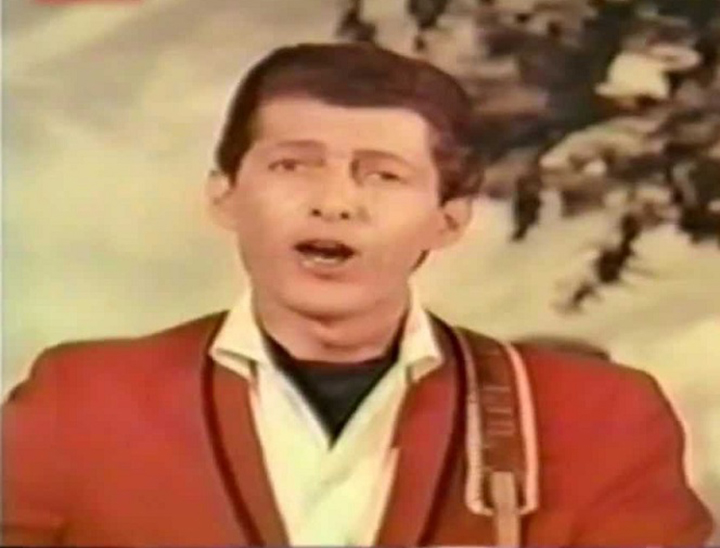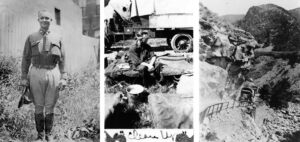Downt-downt-da-downt-downt-downt. Downt downt-downt-downt-da-down.
Scrutinizing readers will immediately recognize the above lyrics as those the late country star Roger Miller sang to accompany the guitar licks in his hit song “Dang Me.” While Miller made a name for himself with his comedic twists on his music and lyrics like “My pappy was a pistol; I’m a son of a gun,” he wasn’t the only of his era to be regarded as a “funny man.”
In fact, Del Reeves’ “Doo-da-do-do-doo. Doo-da-do-do-do,” earned far more play time on 1960s country radio than Miller’s, but it was only because Reeves sang the syllables as the introduction to so many of his songs.
When it comes to voice-inflected guitar-picking, it’s hard to beat Roger Miller’s longevity. Then again, Reeves had his share of popular records back in the heyday of “Country Gold” — and more than one of them was a trucking song.
Franklin Delano Reeves was born just days after his namesake accepted the Democratic nomination for president of the United States in 1932. He was the last of 11 children; most of Reeves’ older brothers fought in World War II.
They all had musical talent, though, and Reeves’ mother didn’t see any reason for their instruments to sit around gathering dust when they fought overseas. Instead, she took it upon herself to teach young Reeves the instruments his brothers played, particularly the guitar.
While his brothers were still at war, Reeves made his debut on a Sparta, North Carolina, radio show when he was just 12 years old.
While Reeves received plenty of support from his mother, his father was more realistic about his son’s budding musical career.
“As a child, I told my father I was going to sing on the Grand Ole Opry one day,” Reeves once said. “He said, ‘Yeah, sure.’”
It took Reeves another 20 years, but in 1966, he appeared on the Opry. Over the next 40 years he appeared before up to a million fans a year on the revered Nashville stage.
The nonsense syllables Reeves introduced in song began with his first No. 1 hit, “Girl on the Billboard.”
The song sold a million copies for Reeves in the early to mid-1960s and represented his first foray into the growing subgenre of trucking music. His long question repeated throughout the song is quintessential.
It doesn’t have the triple meaning of the Brown’s 1954 lyric, “I was looking back to see if you were looking back to see if I was looking back to see if you were looking back at me” — but there’s little doubt the song “Looking Back to See” inspired Reeves’ own lyrical question.
And Reeves’ song took a leap into the risqué, at least for 1960s radio.
“Who is the girl wearing nothing but a smile and a towel in the picture on the billboard in the field near the big old highway?” may be the longest run-on lyric in country music history. It certainly gives “Looking Back to See” a run for its money.
The man asking the question in Reeves’ song is a truck driver, one who makes a daily run from Chicago to St. Louis and back. The highlight of his trip is seeing that billboard twice daily. He laments that a “double-clutching weasel” couldn’t ever get a girl to look at him the way the girl on the billboard does.
The driver seems to keep an eye on the billboard in hopes of what might come next.
“I bet it wouldn’t take her very long to be gone if someone would pull a dirty trick and take her towel away,” Reeves sings in another long lyric.
He claims to slow his rig down to 20 mph every time he passes, noting that the billboard causes a wreck for each mile per hour he’s traveling every day. He even starts to question his sanity, realizing that he’s wanting to hold her rather than just look at her picture.
But, as all sad songs must end, “Girl on the Billboard” does as well with another of Reeves’ signature run-on lines: “… sleepy-headed painter said the girl wasn’t real and I better be getting on my way…..” In the end, there’s nothing left but pieces of the driver’s heart scattered between Chicago and St. Louis.
“Girl on the Billboard” wasn’t Reeves’ only hit trucking song. Like many others, he scored a hit with “Six Days on the Road,” and he also recorded songs like “Highway 40” and “Trucker’s Paradise.”
In all, Reeves recorded 55 charting country records, the second most popular arguably being “Looking at the World through a Windshield.”
“Looking at the World through a Windshield” is essentially opposite to “Girl on a Billboard.” In the latter, the lyrics focus on a specific girl seen traveling in a specific place — between Chicago and St. Louis.
But “Looking at the World through a Windshield” is the story of the girl the driver can’t see — the one he has waiting for him in Nashville. With his mind on Nashville, the sites he sees are those in Baltimore, along the Pacific Shore, in the Rockies, Los Angeles and “down around Dallas.”
If the girl on the billboard was one he just stared at, the one in Nashville had the driver seeing his life in a different light, one that focuses on what he can see rather than what he cannot.
Other Reeves hits include “The Belles of Southern Bell,” “Women Do Funny Things to Me,” “Good Time Charlie’s,” “Be Glad” and “The Philadelphia Fillies.”
Give them a listen, and you might conclude that Del Reeves thought himself to be a ladies’ man. The reality, however, was much different.
When asked what he hoped to be remembered for, Reeves said, “I couldn’t really sell a ballad. It had to be material on the lighter side. Under this clown’s face, there’s a serious guy. But I never got to show it because I got tagged as that clown. I’ve been clowning as long as I can remember.”
Being a clown did Del Reeves well.
Until next time, allow me to leave you with a little ditty: Doo-da-do-do-doo. Doo-da-do-do-do.
Since retiring from a career as an outdoor recreation professional from the State of Arkansas, Kris Rutherford has worked as a freelance writer and, with his wife, owns and publishes a small Northeast Texas newspaper, The Roxton Progress. Kris has worked as a ghostwriter and editor and has authored seven books of his own. He became interested in the trucking industry as a child in the 1970s when his family traveled the interstates twice a year between their home in Maine and their native Texas. He has been a classic country music enthusiast since the age of nine when he developed a special interest in trucking songs.














